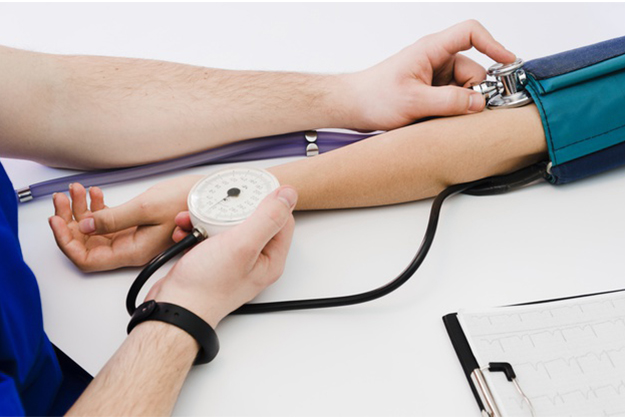Maintaining normal blood pressure is a critical task. High blood pressure ranges from 130/80 mmHg or above. Implement proper steps to regulate hypertension
High blood pressure or Hypertension occurs when force or pressure exerted against the blood arteries is abnormally high. Persistent high blood pressure can cause severe health risks and potentially life-threatening conditions.
If you or someone from your family is suffering from hypertension, this article will guide you on how to take effective actions to bring your high blood pressure to a healthier level.

Causes of High Blood Pressure
An uncontrollable blood pressure range could affect by lifestyle, diet, age, race, and genetics. Below are the mentioned common causes of high blood pressure:
- Lack of exercise
- High consumption of alcohol
- Use of Tobacco or Smoking
- Overweight or obese
- Use of salt, fat, or cholesterol
- Sleep apnea
- Chronic conditions such as diabetes, high cholesterol, or kidney problems
- Family history of blood pressure
- Adrenal or thyroid disorders
- Old Age
Additionally, few symptoms of high blood pressure include dizziness, pounding in the ears, and bleeding nose. However, these symptoms occur when blood pressure reaches an advanced stage.
Diagnosis of High Blood Pressure
The blood pressure range is measured with a stethoscope and a sphygmomanometer. The stethoscope helps to listen to the sound of the heartbeat. If it indicates no sound, it shows no blood flow. You will hear the sound of the blood flow again, as the pressure is released from the bladder. That point becomes your blood pressure systolic reading. In diastolic reading, you will hear no sound again, and it means the blood flow is back to normal.
The blood pressure range is also measured by automatic digital devices. It’s a common procedure, which doctors or nurses follow during patient visits. A digital monitor includes a band (cuff) that is wrapped around your upper arm. The band gets connected to a small pump and a meter. When the pump gets squeezed, it feels tight around the upper arm. After some time, it gets stopped and releases the pressure from the upper arm and then shows the readings. It gives two number that forms the reading of blood pressure. The top number is called systolic reading, and the bottom number is called diastolic reading.
Below are the mentioned measurements readings which are the following:
- Normal blood pressure: Less than 120 on top and less than 80 on bottom
- Prehypertension Level: It is 120-139 on top and 80-89 on the bottom
- Stage 1 Hypertension: It is 130-139 on top and 80-89 on bottom
- Stage 2 Hypertension: It is 140 or higher on top and 90 or over on the bottom
- Hypertension crisis: If blood pressure exceeds 180/120 mm Hg
Also, get your blood pressure checked at least once every two years. If you are suffering from high blood pressure range, you have to get it checked more often.
Blood Pressure Range by Age
Below is the chart for blood pressure range according to your age:
Diagnosis & Treatment
To bring your high blood pressure to a normal blood pressure range, your doctor will prescribe you medications. Also, might recommend lifestyle changes. The following are the blood pressure medications that help, which are:
- Beta-Blockers: It reduces your heart rate, which helps to lower your blood pressure.
- Diuretics: It helps to eliminate extra water and sodium from the body
- ACE inhibitors, angiotensin II receptor blockers (ARBs), and calcium-channel blockers, Vasodilators: These all help by relaxing constricted blood vessels
- Alpha-blockers such as doxazosin help to lower your high blood pressure
It is advised to take medications that are prescribed by health professionals. Besides, the doctor may increase your dose gradually. It may take a period of a month to six weeks to bring your blood pressure down with the help of medications.
Moreover, in case you feel any side effects of medications, you need to report to your doctor. Your doctor might change or switch medications that will be suitable to you and free of any side effects. Side effects include fatigue, depression, sleep issues, changes in heartbeat, dry cough, and more.
Final Word
An uncontrollable high blood pressure situation is not inevitable and could be taken under control. Therefore, it is necessary to make a habit to keep a regular check on your blood pressure and maintain a healthy lifestyle. Avoid the use of sodium in your diet, alcohol consumption, and smoking. Implement lifestyle changes such as exercise, or meditation to manage your stress and anxiety. Make sure to plan doctor appointments to keep a check on your health. With proper precautions, medications, and lifestyle changes you can handle hypertension beforehand.






